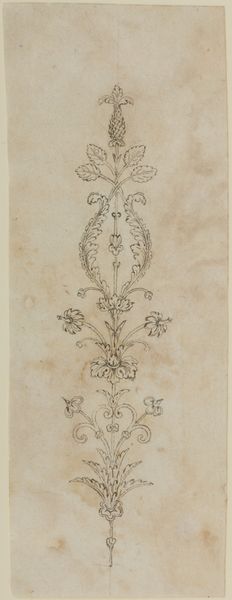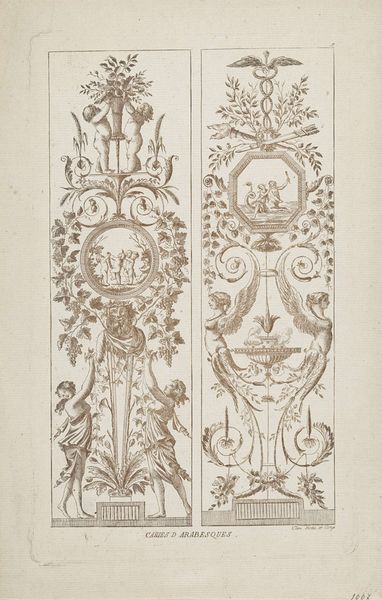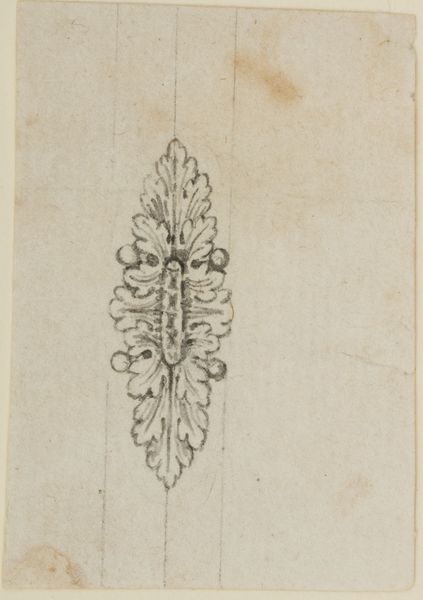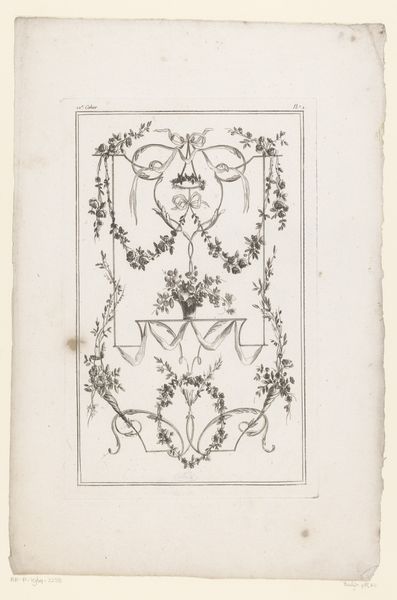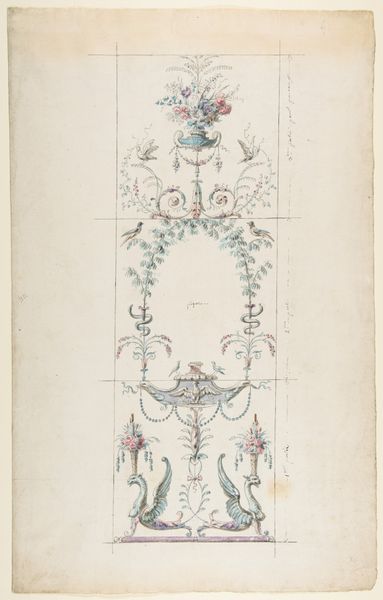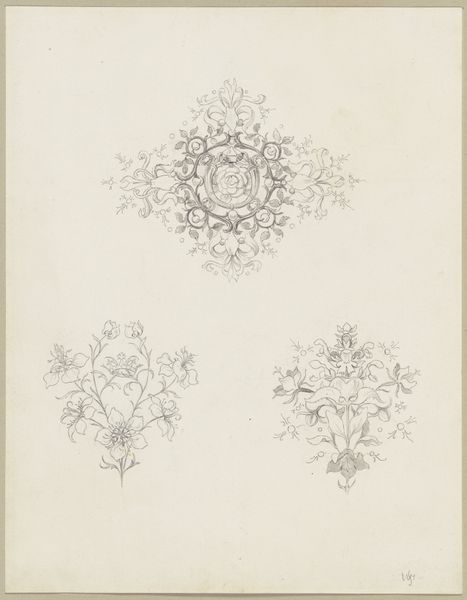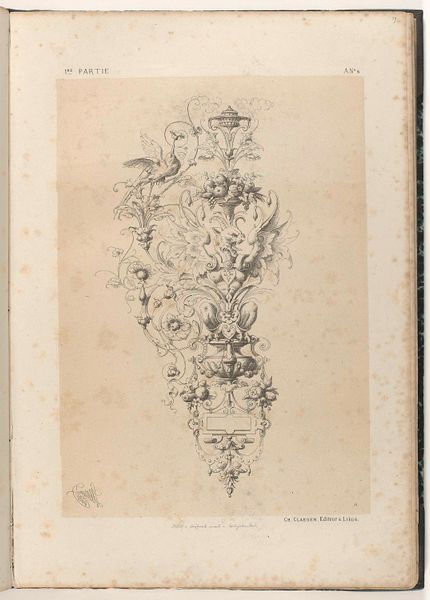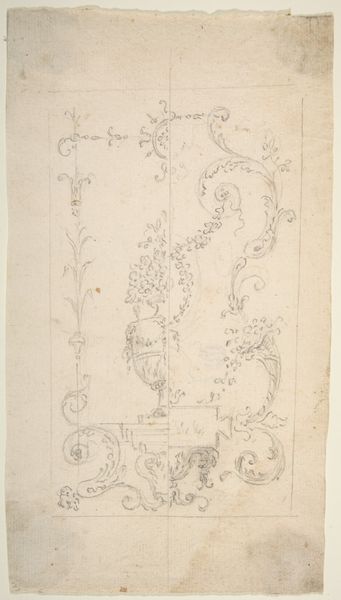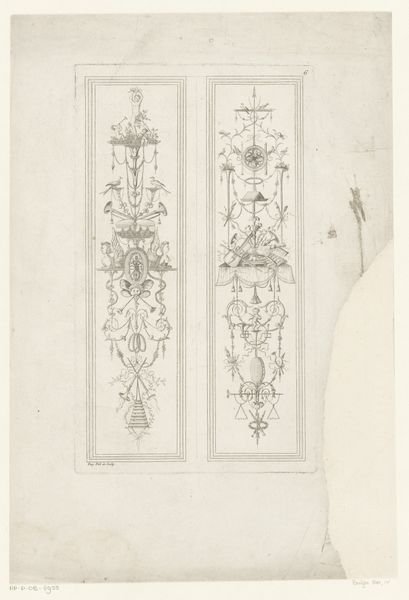
Four Designs for the Decoration of Firearms 1772 - 1830
0:00
0:00
drawing, ornament, paper, pencil
#
drawing
#
ornament
#
paper
#
geometric
#
pencil
#
france
#
men
#
line
Dimensions: 7 3/4 x 5 7/8 in. (19.7 x 14.9 cm)
Copyright: Public Domain
Editor: So, we’re looking at "Four Designs for the Decoration of Firearms" by Nicolas Noël Boutet, likely created between 1772 and 1830. It’s a pencil drawing on paper. I find the contrast between the delicate ornamentation and its intended purpose on weapons quite striking. How do you read that contrast, given the historical context? Curator: The juxtaposition you highlight is crucial. Boutet was working in a France grappling with revolution and empire. Think about it: weapons, symbols of power and violence, are adorned with elaborate, almost feminine, ornamentation. What does it tell us about how power was constructed and displayed at the time? What ideas about gender roles might this be reinforcing or perhaps subverting? Editor: Subverting? It seems very much in line with a kind of aristocratic sensibility, masking brutality with beauty. Curator: Exactly. But consider this: who commissioned these designs? What statement were they trying to make? The elite certainly wielded power, but perhaps there was also a need to soften or legitimize that power through aesthetic choices. Also, consider France's colonial pursuits at the time. Could these weapons be seen as objects of status and control within those exploitative power dynamics? Editor: That is grimly fascinating. So, the beauty almost serves to normalize violence and oppression? Curator: It certainly complicates it. It forces us to confront the relationship between aesthetics, power, and violence. How might these ornate designs function as a form of propaganda? What about the role of the artist in all of this? Editor: I hadn’t considered the artist’s complicity. That’s a sobering thought. Curator: It’s uncomfortable, isn't it? But critical to understanding art's place in historical narratives, especially around issues of conflict and social control. We have to acknowledge the full spectrum of its cultural functions. Editor: I’ll definitely look at similar works with new eyes now. It’s not just about the pretty designs, but about understanding what they conceal.
Comments
No comments
Be the first to comment and join the conversation on the ultimate creative platform.
